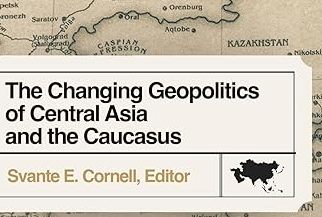The ISIS threat and Moscow's influence in Central Asia and the Middle East
By Dmitry Shlapentokh
November 6, 2015, The CACI Analyst
Moscow has recently undertaken several actions aiming to increase Russia’s influence in the Middle East and Central Asia. On August 23-28, 2015, the Collective Security Treaty Organization (CSTO), which includes several members from Central Asia, undertook military exercises in Russia. Russian authorities stated that the maneuvers aimed to help CSTO members develop means to effectively move airborne forces and other troops to conflict zones, including in Central Asia. The exercises partly served to address a real concern on the part of Russia as well as other CSTO members over the rise of the terrorist organization calling itself the Islamic State (ISIS). However, Russia sees ISIS not only as a threat but also as an opportunity for both increasing Russia’s influence in Central Asia and providing a pretext for its venture in the Middle East.
Economic models of Eurasianism and the Eurasian Union: why the future is not optimistic
By Vladimer Papava
October 29, 2015, The CACI Analyst
A new Russia-Kazakhstan regional project, named the Eurasian Economic Union (EAEU), was launched in 2015. Specifically, as of January 1, 2015, integrated economic processes among Belarus, Kazakhstan and Russia are governed by the EAEU Treaty. As of January 2, Armenia joined the EAEU and as of May 21, Kyrgyzstan also became a member. In 2011, after the President of Russia declared the establishment of the Eurasian Union, some politicians and experts perceived it as a final victory of Eurasianism ideology in Russia. Under such circumstances, there is a need to analyze the economic models of Eurasianism and the Eurasian Union for a better understanding of their future.
- Eurasian Economic Union
- Russia
- Kazakhstan
- Armenia
- Belarus
- Kyrgyzstan
- EEU
- EEU trade
- EEU single currency
- EAEU
- Eurasianism
- European Union
- Russian geopolitics
- Eurasian geopolitics
- Russia sanctions
- Russia Free Economic Zones
- ASEAN
- EFTA
- EU
- EEU FEZ
- Conflict in Eastern Ukraine
- Russian antisanctions
- Crimea sanctions
The battle for Kunduz and its repercussions
By Stephen Blank
October 22nd, 2015, The CACI Analyst
On October 13, 2015, the Taliban announced its withdrawal from the major Afghan city of Kunduz that it had captured earlier. A counterattack by the Afghan Army and the ISAF alliance’s air power reversed the Taliban’s earlier victory and forced them out of the city. Nevertheless, this battle cannot be considered a victory for the Afghan government or for ISAF, and its repercussions are wide-ranging. Almost immediately after the Taliban withdrawal, President Obama ended his long review of U.S. strategy and policy in Afghanistan by announcing that 5,500 U.S. forces would stay through 2017, i.e. into the next administration, to ensure the continuing stabilization of Afghanistan.
- Afghanistan
- Taliban
- Central Asia
- ISAF Afghanistan
- US strategy in Afghanistan
- US Army War College
- President Ashraf Ghani
- Afghanistan’s staying power
- Battle for Kunduz
- Conquest of Kunduz
- Kunduz retaken
- Obama decision US force in Afghanistan
- Governance in Afghanistan
- TAPI pipeline Afghanistan
- Investment in Afghanistan
- Russian troops Afghanistan
- VicePresident Abdul Rashim Dostum
- Tajikistan
- Taliban control of Afghanistan
- CSTO
- US strategy in Central Asia
Russia in Syria and Putin's geopolitical strategy
By Avinoam Idan
October 22nd, 2015, The CACI Analyst
The deepening of Russia’s military presence in Syria and its direct involvement in aiding the Assad regime during the Syrian crisis is a game changing step in the geostrategic context of the Middle East. This is Russia’s third move during the last eight years to change the strategic status quo in the greater Middle East by means of military force. Russia’s new step in Syria aims to influence the geopolitical makeup of the Middle East following the collapse of the Sykes-Picot order. Russia aims to establish itself as a key player from the Caspian Basin in the east, via the Black Sea, to the Eastern Mediterranean.



 Silk Road Paper S. Frederick Starr,
Silk Road Paper S. Frederick Starr,  Book Svante E. Cornell, ed., "
Book Svante E. Cornell, ed., "